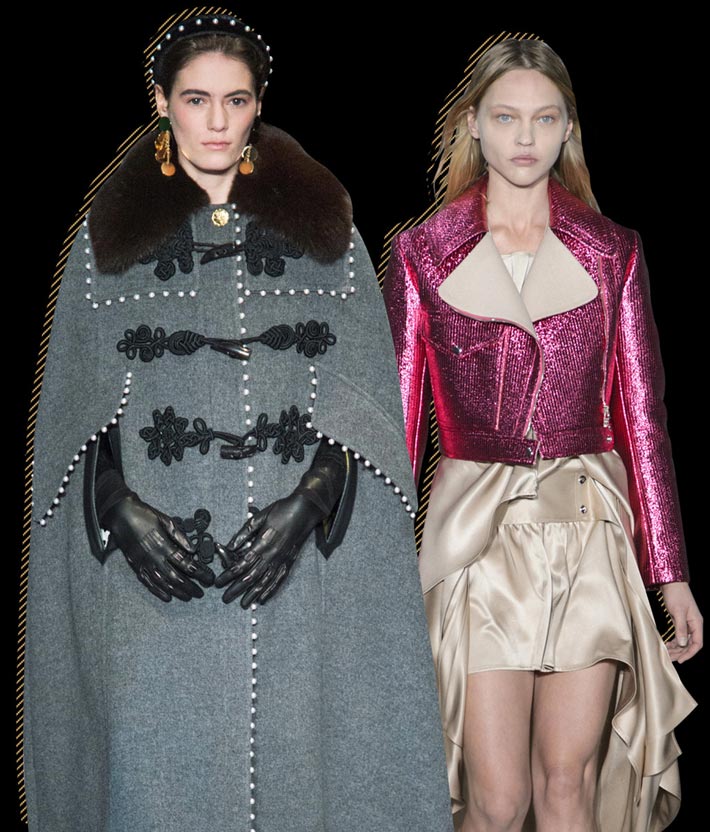New collections show why clothes aren’t costumes. Plus, Altuzarra’s Renaissance.

The Grammys, like the Oscars, usually fall during a fashion week, and inevitably there are morning-after comparisons between the runway and red carpet — or, this time, Beyoncé’s Last Supper table buffered by swooning maidens. But, while I adore Beyoncé for her full earth-mother mode — and suspect she’s sort of winking at the public’s obsession with her body — her outfits, even for galas, are really costumes. It’s the same with Rihanna and Katy Perry, and to an extent some actresses (Nicole Kidman in the foil-y green Gucci at the recent Golden Globes). The rest of us, since we don’t live on a stage, just wear clothes.
I was thinking about this on Sunday, after a late-night pit stop at Oscar de la Renta to preview the collection, which will be shown this evening. I had asked Fernando Garcia, who is part of the new team leading Oscar, what his main goal was and he said, “Just giving the clothes more polish.” In other words, he wasn’t going for a big statement. He never mentioned a theme, apart from some armor he had seen on a company trip to Russia. That translated into a beautifully simple black jacket with well-defined shoulders, worn with sharp trousers. The look was unmistakably Oscar in cut and quality, but it was also fresh. There are more trousers in the line than you’d associate with Oscar de la Renta. But then pants are what many women wear today. Each outfit Garcia showed me made a case for high-fashion polish and relevancy.
That fairly simple formula might have helped at Diane von Furstenberg and Sies Marjan. Jonathan Saunders, the creative director at DVF, has a great eye for color and pattern, but based on what he presented, it was hard to find an outfit you could actually picture on the street. Silk print dresses or skirts were long and flappy; models kept adjusting tops that spilled open. Small fur or wool wrap jackets lent a bit of control, but in a way Saunders’s collection had too much fashion in it, making things complicated. I also think that many of his designs are too sophisticated for a slightly funky, contemporary-priced brand like DVF. Oscar de la Renta depends on polish and exceptional fabrics, but DVF just needs to be fun and easy, on the wallet as well as the eye.
At Sies Marjan, a relatively new label, Sander Lak had the same problem but multiplied. His models seemed to be drowning in blanket-shaped tops and others cut with a long asymmetrical hem. It was the droopiest bunch of clothes since the Japanese avant-garde invaded Paris in the 1980s, except in garish saltwater-taffy hues and of course without the social context that made the bag ladies of Rei Kawakubo look so new. Kawakubo was rebelling against bourgeois glamour — a virtual fortress in Paris at the time. But that day has passed. And today even the most conceptual designers, like Demna Gvasalia of Vetements, are always thinking of who will wear their stuff. Lak seems to land in a fashion no-man’s land.
It took only an elaborately braided toggle coat and a velvet headband seeded with pearls to guess that Joseph Altuzarra had been inspired by Renaissance portraits. Those painters did love their fashion, and in keeping with that conspicuous display of wealth, Altuzarra poured on the details — wide fur collars, corsetlike lacing on slim jersey dresses, cable-knit sweaters with flower embroidery. Pearls edged the lacing of classic motorcycle or ski boots. Too much? Not really, because Altuzarra balanced everything with relevant designs, like checked blazers, those tough boots, and some low-key dresses, including one in a garnet print with a contrasting panel in front. I love, though, that he soaked up the embellishment and colors of the Dutch and Flemish painters — the deep reds, browns, a jolt of saffron for a velvet dress. It made for a visually different collection, and one he seemed to enjoy making.
Source: http://nymag.com
